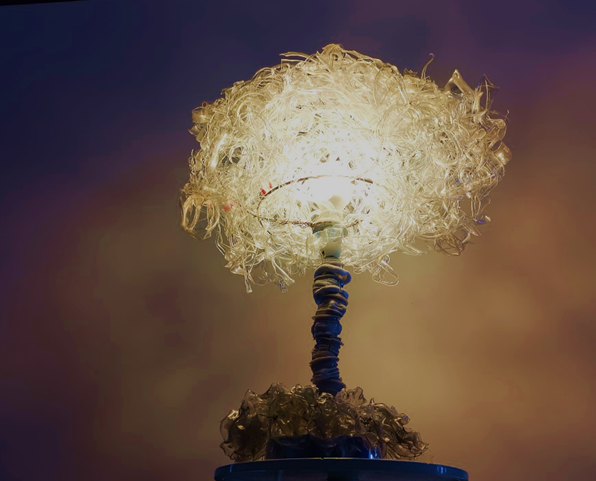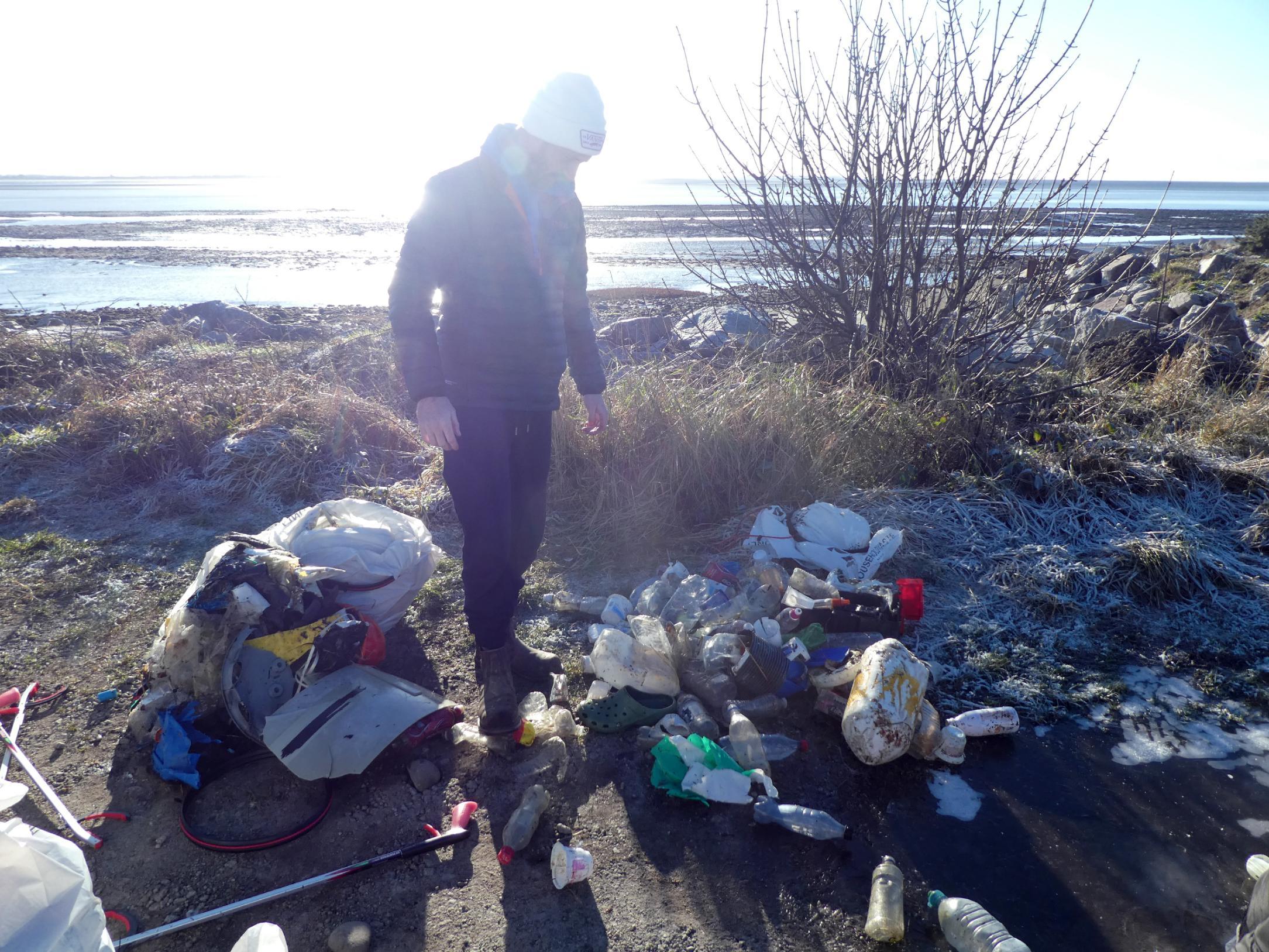Waste Stories: Developing Learning Approaches for Sustainability and Creativity
Published by Anna Wilson
Waste is one of our biggest environmental challenges. Documentaries and news stories highlight the eye-watering accumulation of plastic rubbish in our oceans; the mountains of discarded clothing that make their way from the Global North to countries such as Ghana; and slow-burning landfill fires fuelled by tyres. Yet waste rarely features in formal or informal curricula (including in adult and lifelong learning contexts), except in activities and resources that aim to encourage recycling. It is even rarer to find learning activities that ask us to think about why something becomes waste, or to question whether it should exist in the first place.
Waste Stories tried to address this through a series of partnerships with Third Sector Organisations and Further Education Colleges, each of which used the creativity of those involved to look at waste in new ways and to create objects and artefacts that are educational resources in their own right.
We started with a focus on marine litter. Inspired by a visit to the Galloway Hoard exhibition at the Kirkcudbright Galleries, we worked with the Scottish Islands Federation Marine Litter Working Group and local participants in four Scottish island locations (Bute, Eigg, Islay and Orkney) to imagine how marine litter might be interpreted by the archaeologists and historians of the future. Together, conducted beach cleans in each of the locations. Participants selected items that would be included in imaginary exhibitions of “future archaeologies” and co-created narratives of both the futures in which these objects were found and interpreted and the journeys that led to them from the present. We made physical exhibitions that were exhibited in public spaces including the Rothesay iCentre, Eigg Museum, Stromness Museum and Glasgow’s Mitchell Library, as well as an online version. At the same time, we worked with the Solway Firth Partnership and Museums of the FutureNow to create the Solway Hoard Exhibition, which was based on objects collected in beach cleans on the Solway shore and stories to accompany them generated in community-based workshops in the region. The Solway Hoard exhibition was premiered at the Kirkcudbright Galleries and has since been shown in 5 other Scottish museums and community hubs. We ran accompanying workshops at two of these (in Annan and Stranraer) where participants got to create their own imagined futures.
These activities led to partnerships with Further Education Colleges. The first was with Dumfries and Galloway College, alongside the Solway Firth Partnership and Devorgilia Rotary. We acted as clients for students doing an animation unit as part of their Visual Communication HNC/D programme, giving them a brief to come up with their own Waste Stories. As with the “future archaeologies” work, the students participated in beach cleans (organised by Solway Firth Partnership) and selected objects to bring back to the College to use as inspirations for their stories. In the first year that we ran this brief, animations made by the students featured in an exhibition at the University of Glasgow’s Advanced Research Centre and are now available online.
We also worked with lecturers in visual arts at New College Lanarkshire, who had seen the “future archaeologies” exhibitions and wanted to do something with their own students. They gave Waste Stories project briefs to five different classes, including students aged between 16 and 75 studying at levels 3, 5 and 6 or participating in the College’s Art Club. After watching some of the animations made by the students from Dumfries and Galloway College and creating some initial story ideas through flash fiction activities, the students worked on their own pieces for the rest of the block, selecting their own items of rubbish and waste from which to draw inspiration. The result was a collection of over 60 pieces of visual and plastic art, all exploring the theme of waste from individual and often highly personal perspectives. These were exhibited publicly in Glasgow’s Mitchell Library (https://www.nclanarkshire.ac.uk/news/wild-about-waste/) and at the University of Glasgow.
The impact on participants in these different activities was evident in changed attitudes to litter and waste. Dumfries and Galloway College lecturer Penny Humphreys reported how students who had previously seemed unaware of the litter in their environments became far more attuned to it. She also reported conversations in which students challenged their peers and their own behaviours and the social norms that can make careful disposal and separating items for recycling seem “uncool”.
Participants in the accompanying creative workshops described how engaging in something that was simultaneously humorous and serious helped them to see the absurdity of some of the items of marine litter that we had brought along: some described lightbulb moments where they realised that the question they should be asking was not how to remove items such as plastic flowers from beaches, but rather why we make this stuff in the first place. One of the museum staff who participated in a workshop found it so effective that she did it herself at Museums and Galleries Scotland’s “storytelling for the planet” event.
Comments from the visitor books for the “future archaeology” and NCLAN exhibitions included:
“Fascinating exhibition: imaginative and eye-opening”
“Every Human on the planet should see this “
“Brilliant. Send it everywhere”
“Amazing. So inventive”
“Fascinating and thought provoking. Very original idea and presentation”
“Throw-away society turned on its head in this exhibition – great work, great examples for us all to follow”
“Really awesome work, powerful stuff – hope it will translate to making everyone more conscious of waste”
Perhaps the most important impact of these activities, however, was on the College lecturers. They described how the pedagogies we developed together had created unique and powerful opportunities for their students. Penny (DGC) described how the freedom offered by the brief given to her students helped them to develop not only their understanding of environmental challenges, but also their creativity and autonomy. She described this as a lasting impact, which she could see in the first cohort as they continued their studies the following year. NCLAN lecturer Mia McGregor described the project in very similar terms. All the lecturers involved commented on how the opportunity to co-create a public exhibition of their own art had been an important step for their students, resulting in increased understanding of why we make art and what it means to be an artist, and also increasing the sense of community within the groups. Mia also described how involvement in the project had made her and her colleagues rethink their own teaching, now seeing the need to build in similar activities and projects throughout their practice. As her colleague Simone said, “It’s definitely a lesson in seizing every opportunity”.
The Waste Stories team would like to thank all of the partners and participants: it’s their imaginations that make the difference.
Wilson, A. (2024). From Crime and Punishment to Future Archaeologies: Reimagining Relationships of Waste and Value. In Writing Landscape and Setting in the Anthropocene:
Britain and Beyond (pp. 233-251). Cham: Springer International Publishing. https://doi.org/10.1007/9
Wilson, A., Robertson, G., Uflewska, A., & Humphreys, P. (2024, May). Waste Stories: Networked Imaginaries. In Proceedings of the International Conference on Networked Learning (Vol. 14). https://journals.aau.dk/index.php/nlc/article/view/8097
Wilson, A., Robertson, G. & Uflewska, A. (2024). Waste Literacies. Centre for Research and Development in Adult and Lifelong Learning Briefing Paper 9/2024/Waste Stories Briefing Paper no. 1. https://wastestories.org.uk/wp-content/uploads/CRADALL-BP-9-2024-Wilson-etal-1.pdf
Wilson, A., Robertson, G., Uflewska, A.. (2024). Foolish Foil: developing new folklore for the Waste Age. Waste Stories Briefing Paper no. 2. https://wastestories.org.uk/wp-content/uploads/WasteStories-BP-2.pdf
Waste Stories website: https://wastestories.org.uk
Future Archaeologies of Marine Litter website: https://futurearchaeologies.org.uk/future-archaeologies-of-marine-litter/

ABOVE: NCLAN- Plastic Brains
BELOW: Student Inspecting the Treasure


